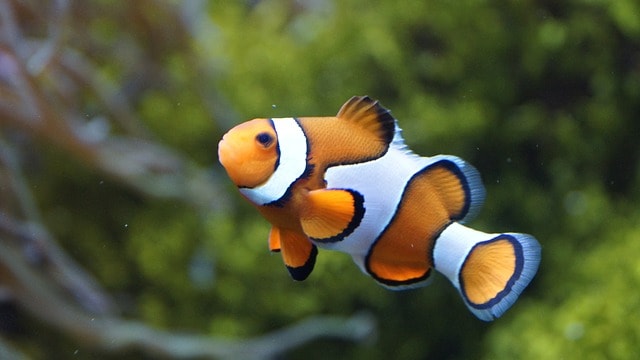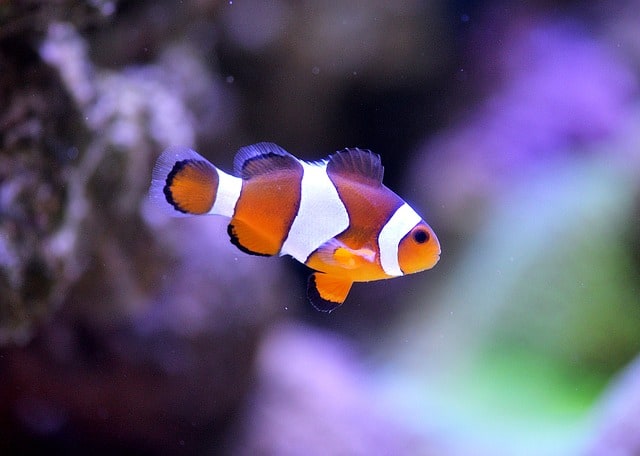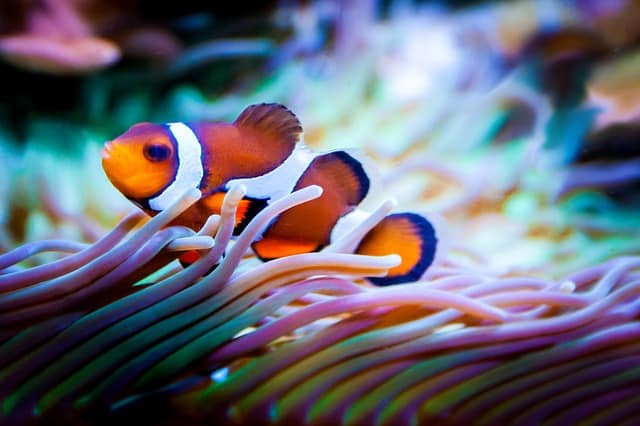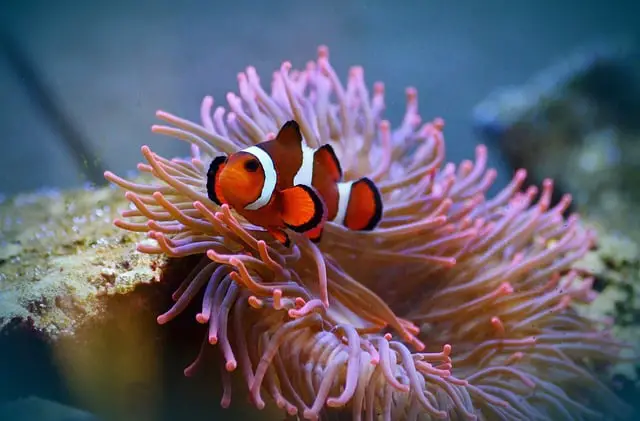If you have ever watched a telecast about clownfish in the wild or observed them yourself in captivity via an aquarium, you have likely noticed that they prefer the company of a sea anemone to any other aquatic creature, even other clownfish! There is a definite reason for this. Perhaps you have wondered to yourself why clownfish and sea anemones pair up? Well, I have the answer:
To survive out in the ocean, clownfish and sea anemones will often pair up. The clownfish relies on the sea anemone to provide shelter/protection from predators whereas the sea anemone depends upon the clownfish for food. This type of mutually beneficial union is what is often referred to as a symbiotic relationship.
Now that you know clownfish and anemones pair up to ensure their survival, let us explore this topic further and in more detail below. I will discuss the unique relationship between clownfish and sea anemones, how they go about pairing up, whether a clownfish can harm a sea anemone (or vice versa), and which anemone is best for clownfish.
So, if you are ready to learn more about the special (and vital) connection between clownfish and sea anemones, then please continue reading…
What is the Relationship between a Clownfish and an Anemone?
As mentioned above, the pairing between a clownfish and an anemone is a mutually beneficial one also known as a symbiotic relationship. Only the clownfish is immune to the stinging venom excreted from the anemone’s tentacles, which are used to trap prey. The venom not only paralyzes the anemone’s victims, but it also protects it from would-be predators.
The clownfish is covered by a layer of thick mucus (four times thicker than that of any other fish) that suppresses the venom, allowing it to swim unharmed between the anemone’s tentacles. This ability is what protects the clownfish from would-be predators that are then caught and eaten by the anemone. Essentially, the clownfish acts as bait.
In addition to supplying food, a clownfish also helps its anemone ‘breathe’ at night. Anemones can do very little when it comes to controlling current flows and therefore need clownfish to help circulate water over their bodies. This provides not only nutrients but also oxygen, which is necessary for survival. In return, the anemone provides a safe place for its clownfish to dwell in the dark.
Clownfish help keep anemones clean by eating algae and other food particles off them. They also chase away polyp-eating creatures such as the butterfly fish. In exchange, the anemone provides a home for the clownfish and a place to retreat for comfort and security. This relationship between clownfish and sea anemones is an example of mutualism at its best and is vital to the well-being of both species.
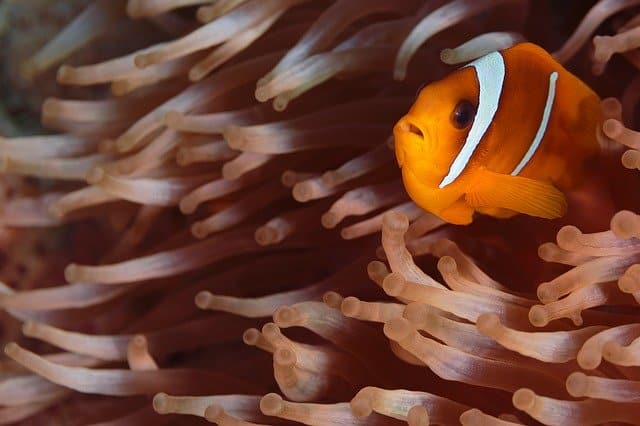
How do You Get Clownfish to Pair with an Anemone?
For some clownfish, pairing with an anemone in an aquarium takes only hours upon discovering it. For others, it takes weeks or even months! If you have a clownfish that shows little to no interest in hosting an anemone, there are a few tricks you can try to help speed the process along…
- Begin by placing the clownfish and the anemone in a confined space (such as a small 5-gallon tank) for a short period of time.
- Wait until the anemone has attached itself to a rock and then very gently move into the smaller tank. Do your best not to upset it otherwise, it will shrink down making it impossible to host.
- Once you have the anemone in place, put your clownfish in the small tank. It should find the anemone quickly (fingers crossed) and start rubbing against it, signalling the pairing process.
- When you notice the clownfish diving into the anemone without hesitation, it is then time to move both back into the larger community tank.
- If the clownfish still seems reluctant, try removing a bit of water from the smaller tank until there is very little room to swim except for near the anemone.
The above method should only be used as a last resort. Moving a clownfish and an anemone from a larger, more established tank to a smaller one can be quite stressful on both species. It can even kill them, so you must be observant and proceed at your own risk!
Ideally, you want the clownfish to find the anemone on its own in the community tank. Be patient. Eventually, the clownfish will ‘discover’ its host. Once it does, you will be amazed at the awing-inspiring relationship between the two!
Will an Anemone Eat a Clownfish?
It is extremely unlikely that an anemone would eat a clownfish. If the anemone is quite large, I suppose it could eat a sick clownfish. I do remember reading online once that an aquarium hobbyist came home one day and discovered the body of his clownfish inside the anemone’s belly! This is very rare, however.
Can a Clownfish Hurt an Anemone?
While there is a very small chance that an anemone could hurt a clownfish, clownfish can and do hurt anemones. In fact, they can even kill them! The reason for this is usually that the clownfish is too big for the anemone and it ends up ‘stressing it out’, albeit unintentionally.
Why do Clownfish Rub on Anemones?
Just as little Nemo can be seen rubbing on his anemone in the classic Disney cartoon, Finding Nemo, clownfish in real life do this to prevent anemones from stinging them. It is a way of acclimating the fish with its new host so it can move freely among the anemone’s tentacles without being stung.
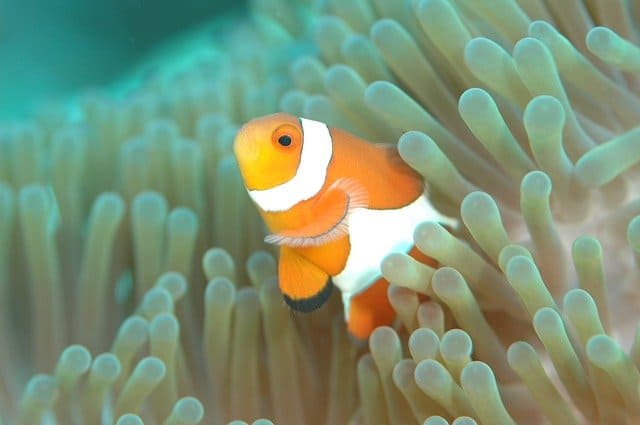
Can Clownfish Survive without an Anemone?
While clownfish can survive without an anemone, they will much better in a community tank with one. The anemone provides a place of security and comfort for the clownfish. If there are larger fish in the tank, the clownfish may feel the need to retreat to its anemone ‘sanctuary’ at times.
If the saltwater aquarium is set-up in such a way that the clownfish feels safe in its surroundings, it can do quite well without an anemone. If the clownfish has easy access to food and other forms of shelter, it will be okay. Set-up should mimic that of a reef tank environment with corals, plants, and rock caves.
What is the Best Anemone for Clownfish?
One of the best anemones for clownfish with the highest survival rate is a type of carpet anemone known as the saddle anemone. This creature lives on reefs in shallow waters with soft, sandy bottoms. It can be found among seagrasses at depths ranging from 13 to 130 feet (or 4 to 40 metres).
Another good option is the bubble tip anemone. It is reasonably hardy and very common in saltwater aquariums. It comes in a variety of colours and grows up to 12 inches (or 30 centimetres) long. Found in waters off Figi and Singapore, this anemone makes a great host for maroon and true percula clownfish.
When choosing an anemone for clownfish, keep in mind the following:
- Made sure the color is good – if the anemone is white, do not get it!
- Ensure that the mouth is not too big
- Check that the tentacles are not too short or too thin
- Ensure that the foot area has no tears on it
- Check that the anemone ‘reacts’ when you pick it up
- If the anemone is attached to a rock, make sure to take both – place the rock with the anemone directly into the tank – do not remove the anemone from the rock unless absolutely necessary.
Conclusion
To conclude, clownfish and sea anemones (both in the wild and in captivity) will often pair up. The reason for this is to ensure their survival. Clownfish depend on sea anemones for protection whereas sea anemones rely on clownfish for food. This union is mutually beneficial to both species and is therefore referred to as a symbiotic relationship.
Hopefully, you have found this article to be both interesting and informative. Thank you for reading and good luck with your saltwater aquarium.
Related Posts
Do Clownfish Attack Other Fish?
Clown Fish Tank Set Up for Beginners
Which Clownfish can be Kept Together?
Clarkii Clownfish Care Guide and Tank Setup (Behavior, Breeding, Tank Mates, etc.)



